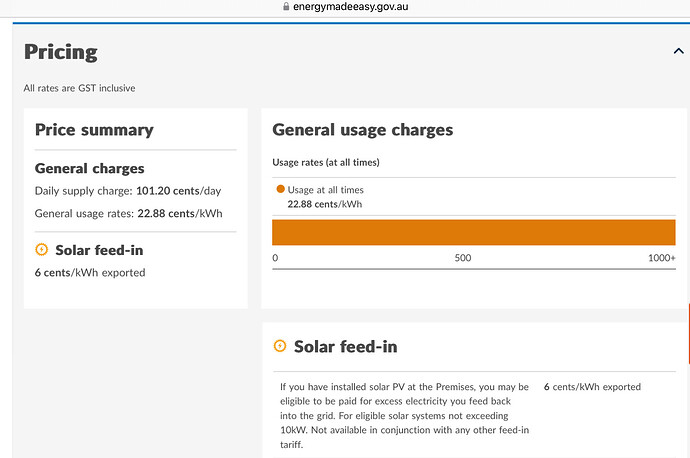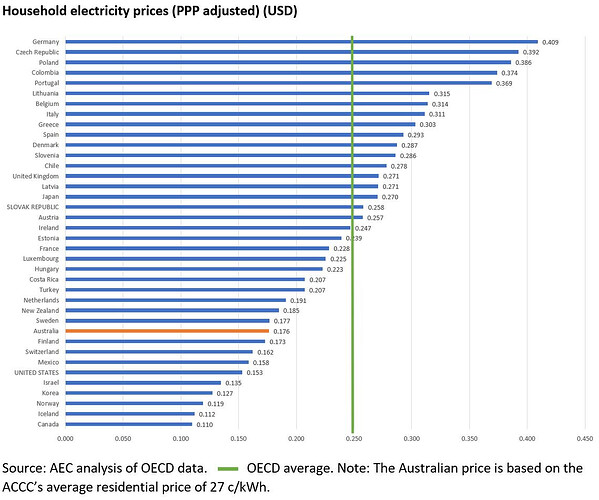The system and how consumers have been charged for electricity has never been fair. It has been further skewed/changed when some governments adopted policies to privatise the industry. Electricity was a service delivered only by government. The capital investment in generation, transmission and distribution was carried by the public purse. Everyone shared that cost based on their ability to contribute towards taxes. IE relative wealth and ability to pay.
How the operating costs were recovered was a decision for each government. Some governments even competed with each other offering cheaper power to large users such as aluminium to attract the industry to the state or local region. It was argued the flow on benefits to the state outweighed any perceived concession in the tariffs offered. The state could suck up the concession and fund it from general revenue, or absorb it into the costs paid by other users.
Times have changed. The principle of an asset shared by the community and funded by the community based on who can most afford to fund the service for social good are long gone. Electricity must now be priced as a profit making enterprise, where the user pays for what they take.
This may seem a fairer if more expensive outcome for some. It’s important to consider the two most expensive components of the cost of supply of electricity.
- The ability to generate additional supply to meet peak demands, notably in the evening between 4-9pm. Or on those days of summer and winter when demands for cooling or heating are exceptional. Today those peak demands come at a premium cost - based typically on the bid cost of open circuit gas turbine (OCGT) generation.
- The excess capacity of the transmission and distribution networks required to deliver the peak generation to those consumers demanding the additional supply.
Until relatively recently residential consumers were always charged a flat tariff for electricity. It was independent of whether they were a large user or a small user. It was independent of when one used electricity or whether the maximum taken in any part of the day was more or less than any other customer. There are residential customers who are not large users of electricity, including those who may use gas for heating and or cooking. They pay the same tariff for electricity as their neighbour who might have an all electric home, cook on an electric stove and heat using electric heating in the evening.
The progressive introduction of smart meters has enabled the industry to differentiate between residential customers. It’s possible to charge those who make greater use of electricity during peak demand periods a higher tariff. It’s generically referred to by the term ‘cost reflective tariffs’. Hence there are now ToU (time of use) and Demand based tariffs. Is this fairer? If all residential customers had smart meters and supply could be charged according to the time of day and peak demand it could be.
Reality is the majority of residential customers are still using old style accumulation meters. Those customers are still charged based on a flat tariff. Hence those who are large users with high peak demands are paying less than their fair share and those using less than average or with little extra demand in peak periods are paying more than their fair share.
For those with smart meters and or solar PV, the situation differs between supply regions and states as to what tariffs are offered. It is in writing from the AEMC that smart meters would reduce the costs associated with metering and result in a saving to the customer. That in some regions smart meters are an added cost is contrary to that objective.
What’s fair when it comes to residential feed-in tariffs?
Even without the benefits of a feed-in credit the system has an unfair starting point. Residential Rooftop Solar PV through self consumption has taken approx 15% from that market. PV export has also introduced additional daytime supply further reducing the revenue stream of the generators.
There has also been a proportionate impact on the transmission and distribution network operators. For these businesses their greatest costs are not operational. Their businesses are capital intensive with the cost base of their asset the most significant factor when the AER has made its rate of return determinations. Taking 15% out of the network operators revenue stream is not an option.
For customers with Solar PV the industry has a choice. It’s more complex than just the difference between the export tariff and supply tariff. Rooftop solar PV has made an impact on the costs to supply electricity and for enterprises invested in the industry their profitability. Since they are assured of a return, it’s unlikely the solar PV consumers circumstance will change.



